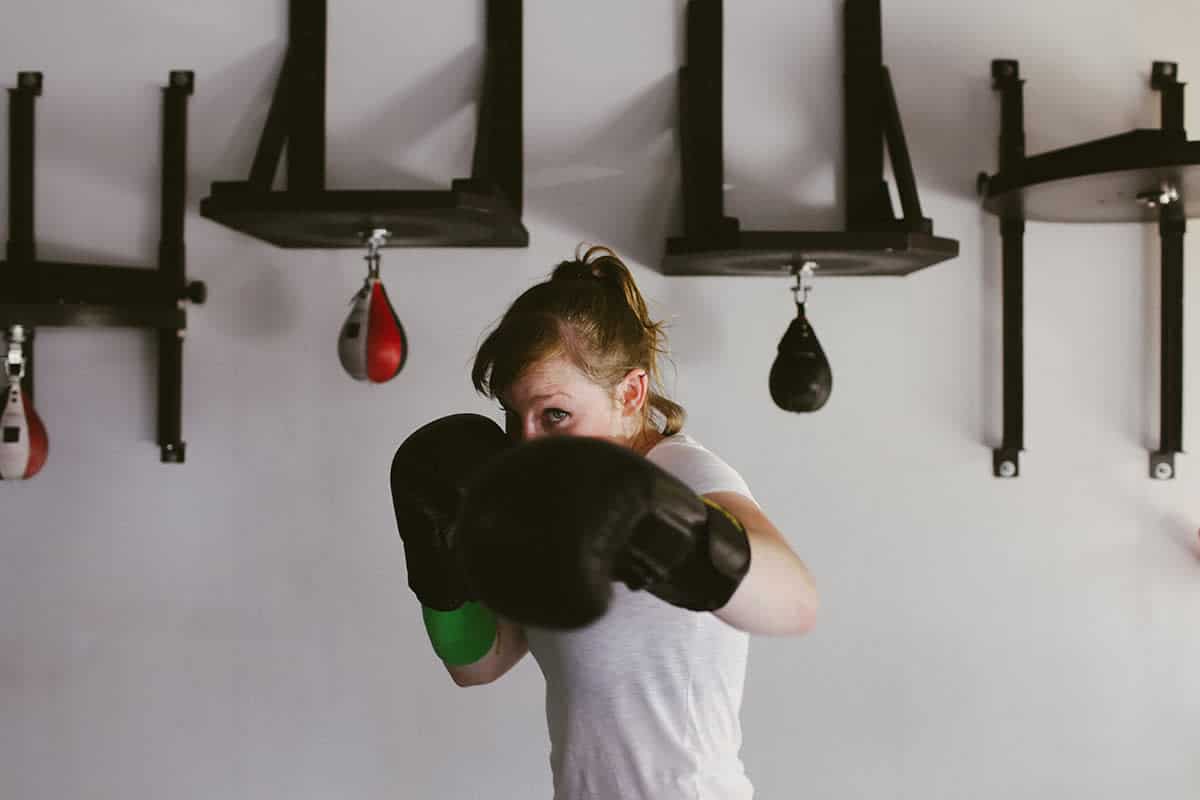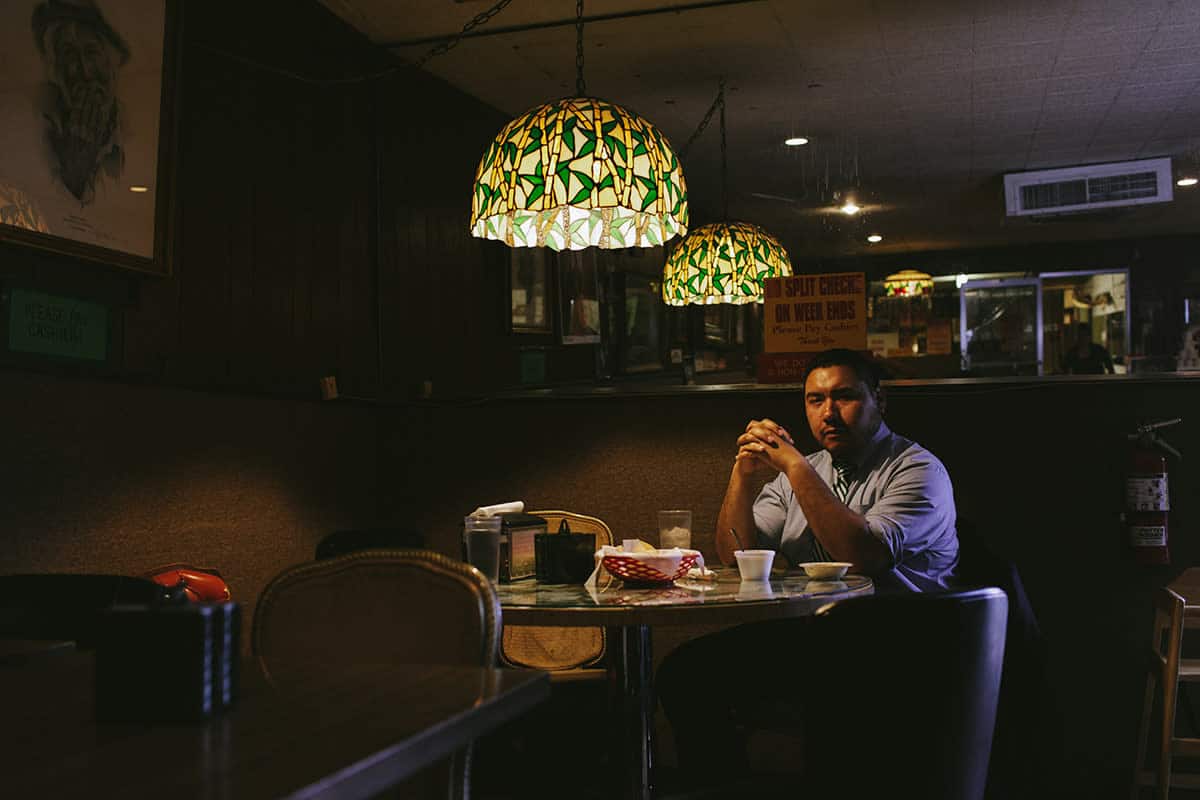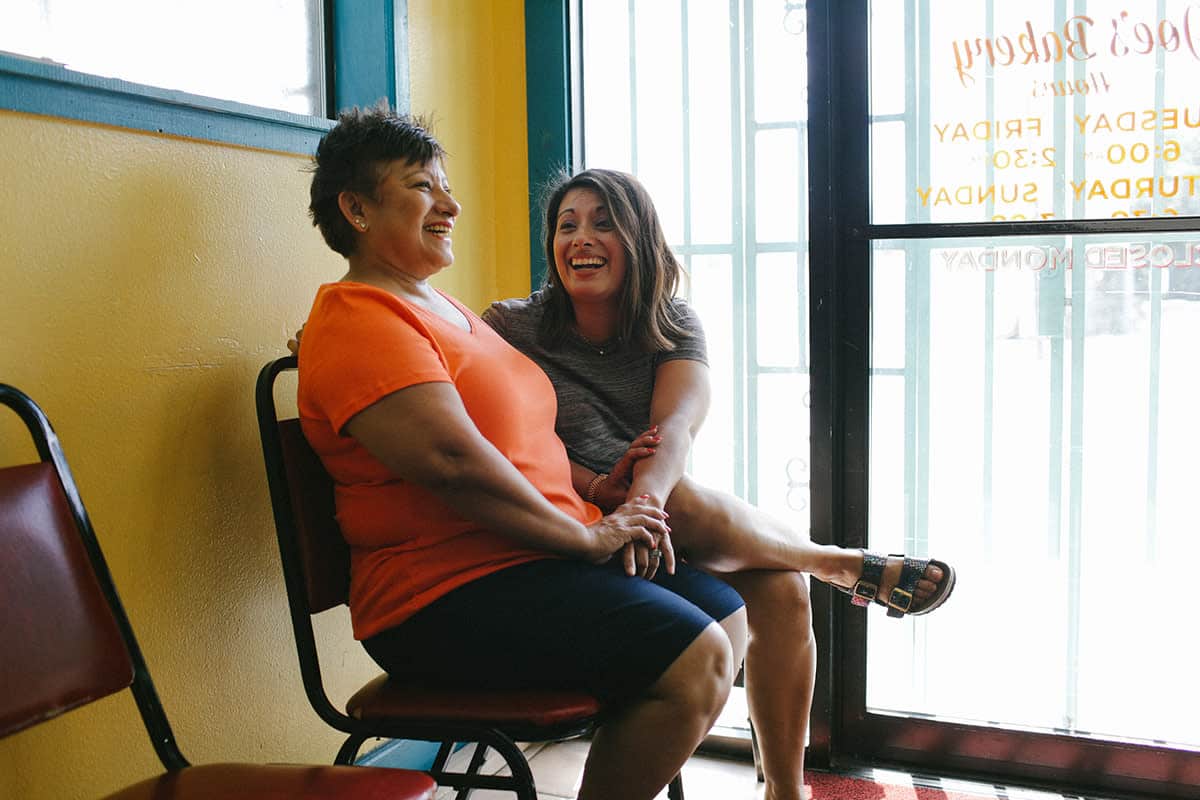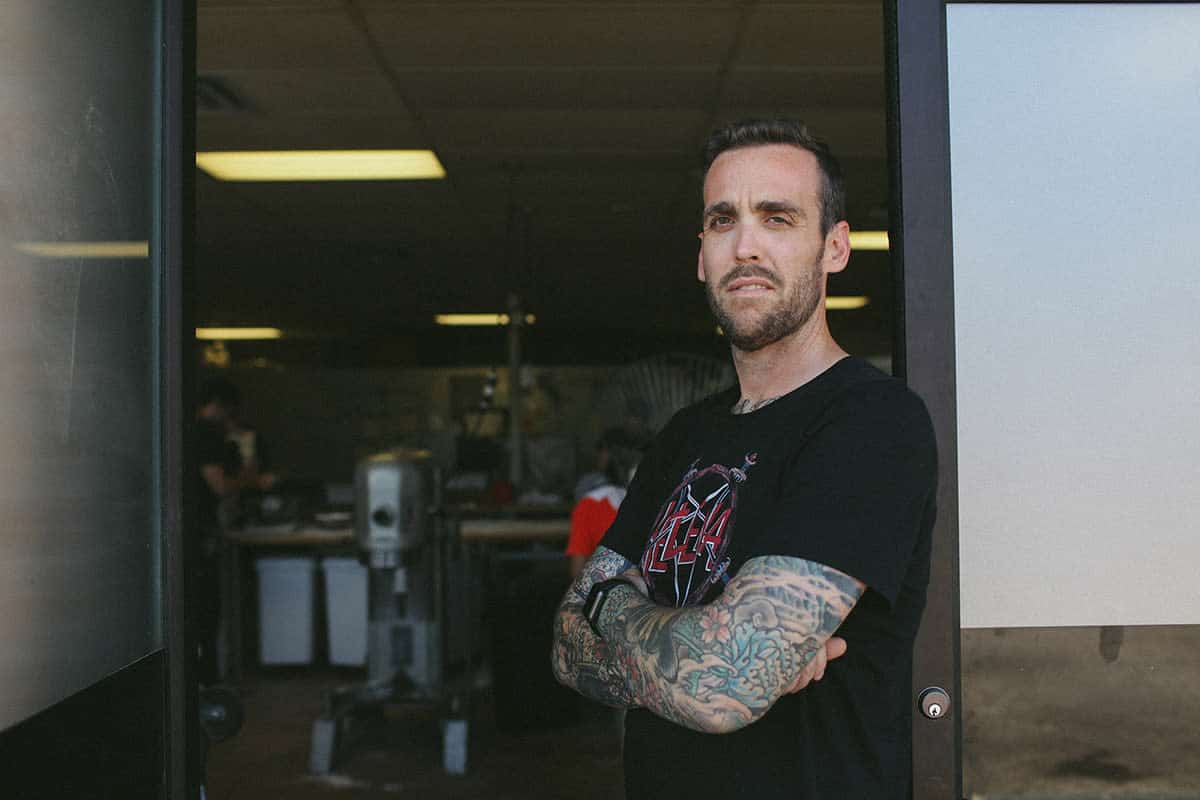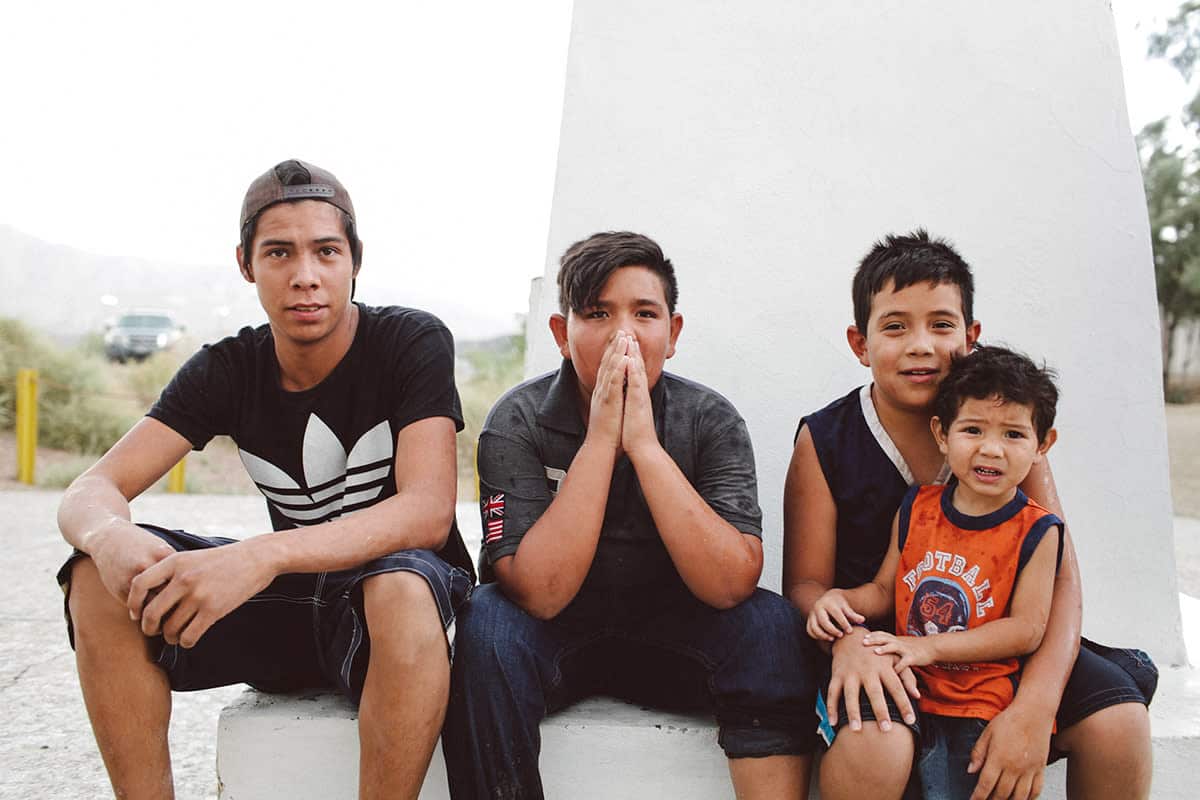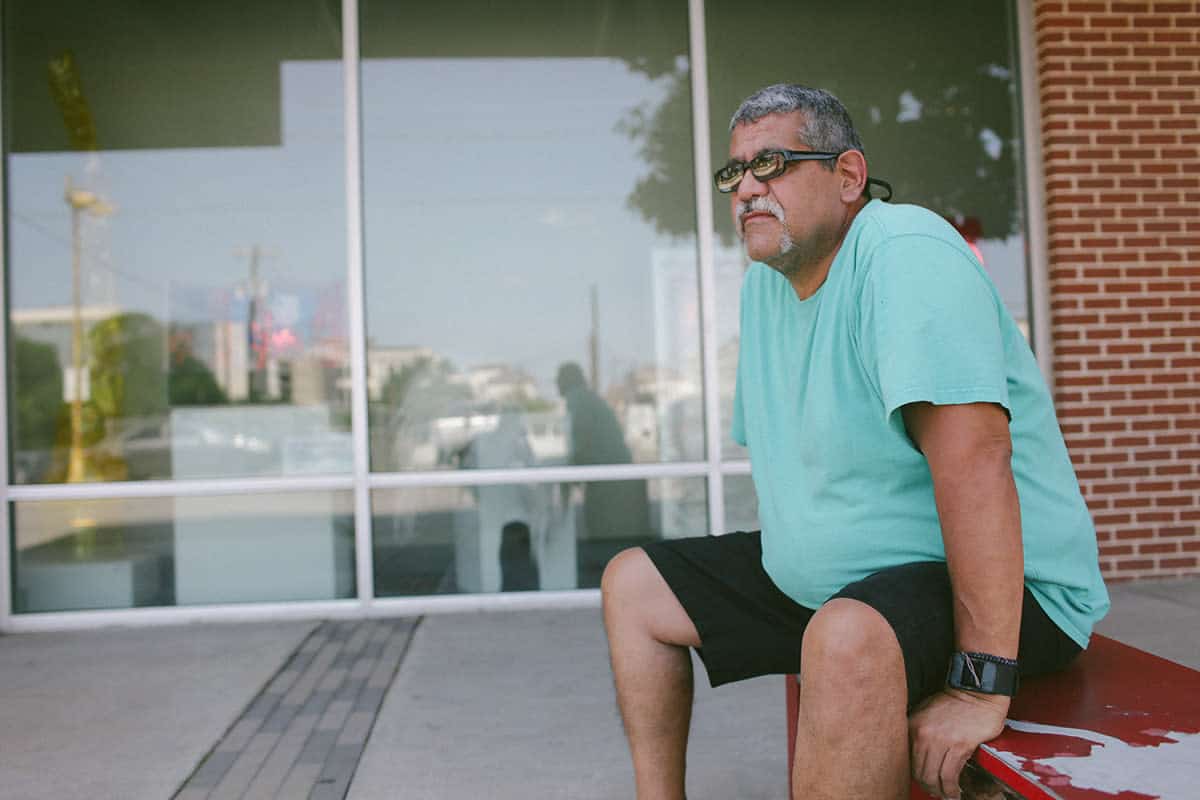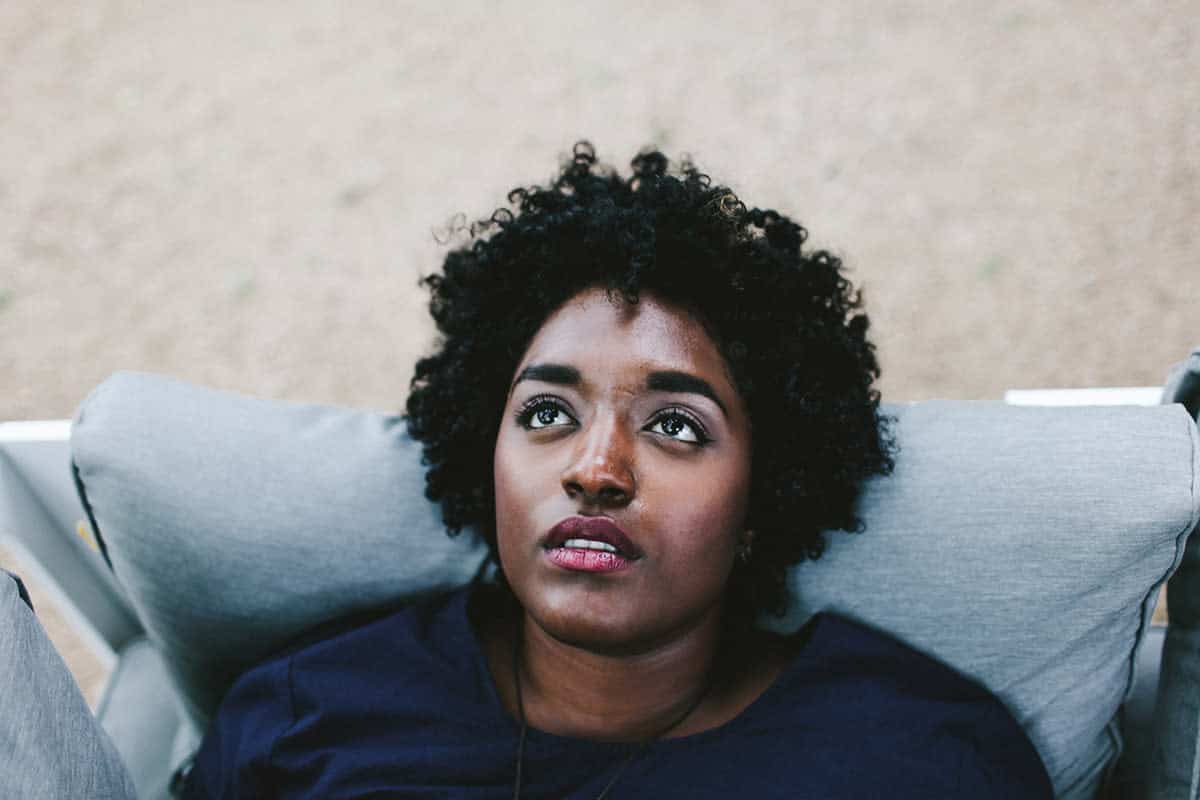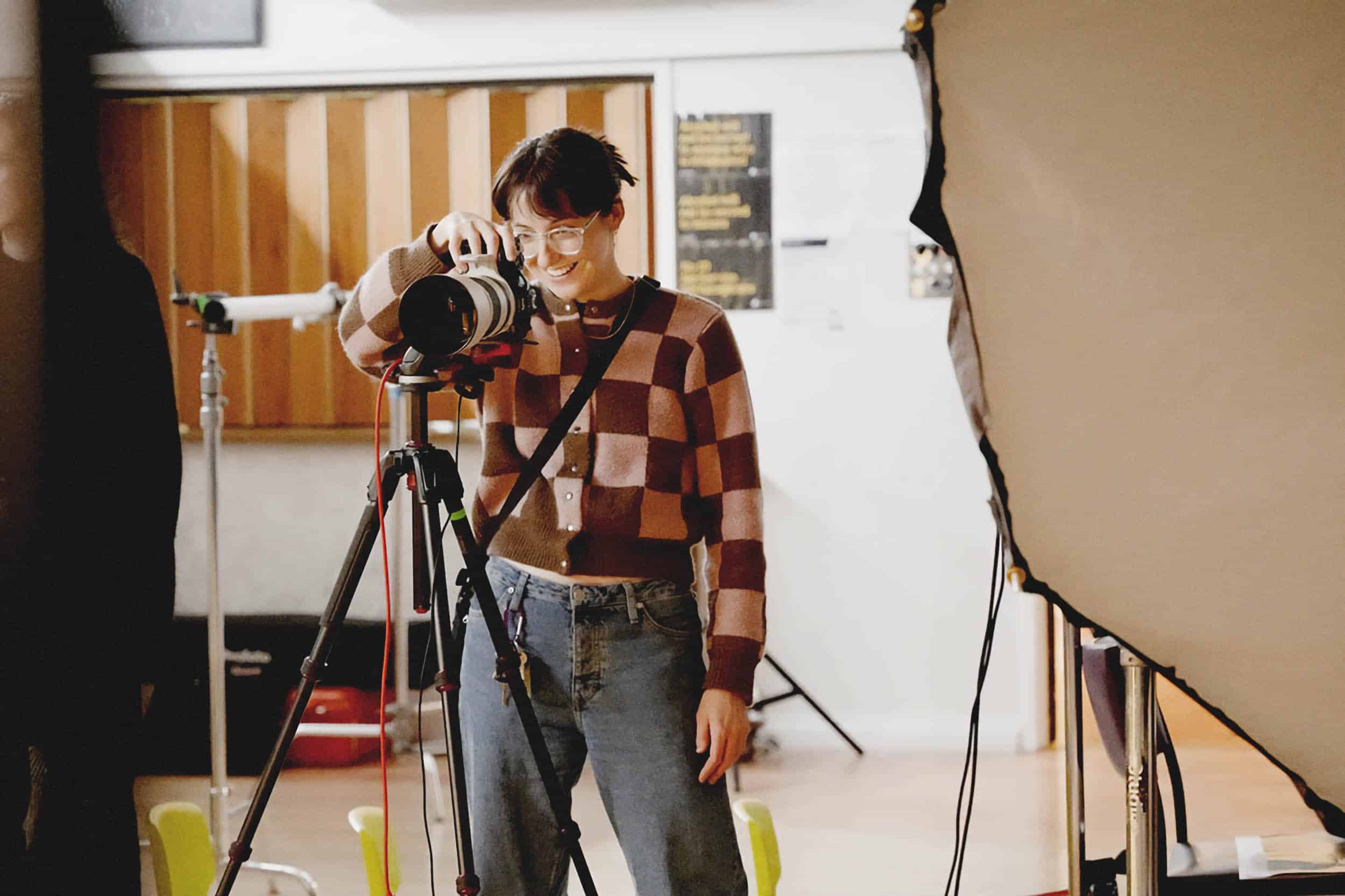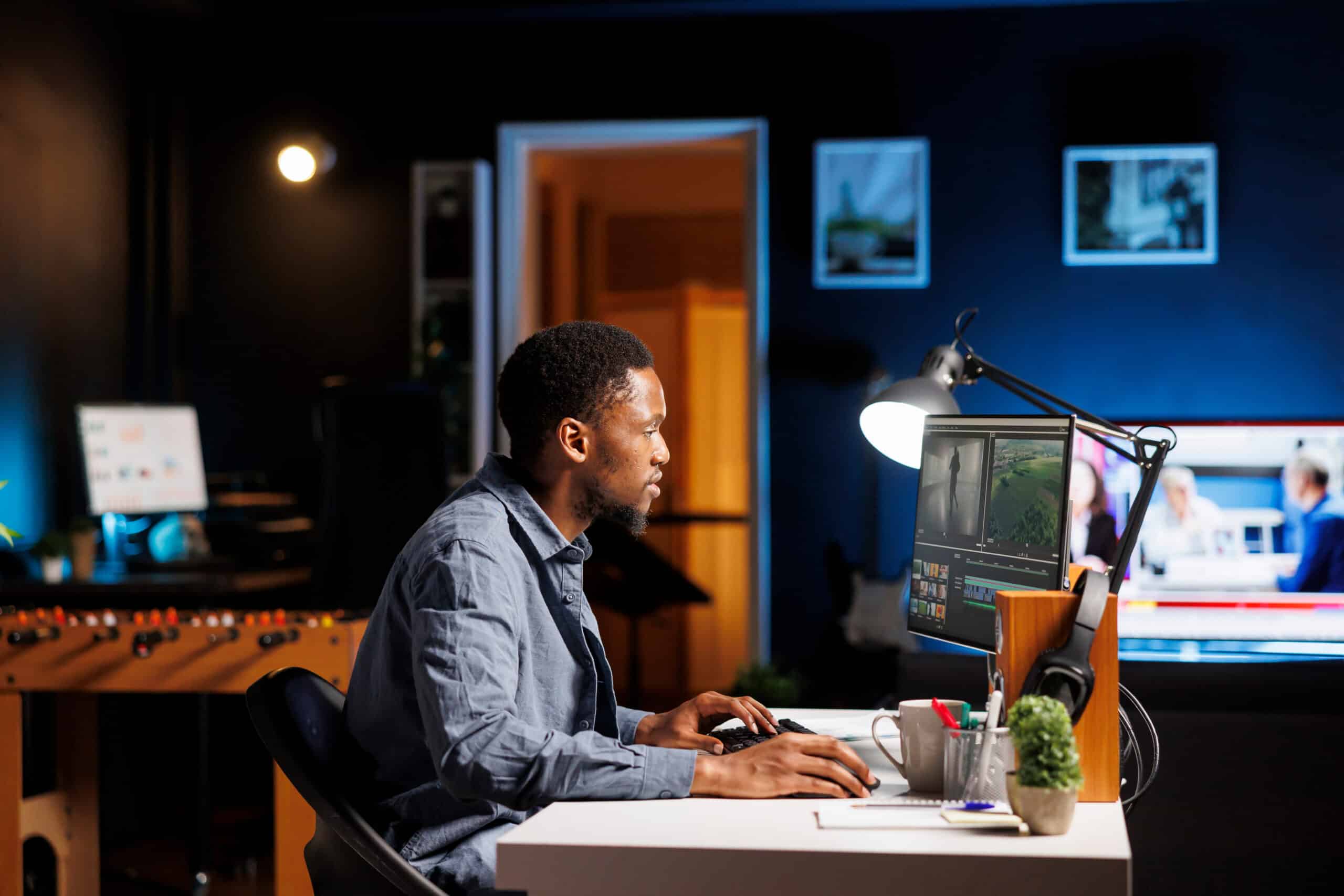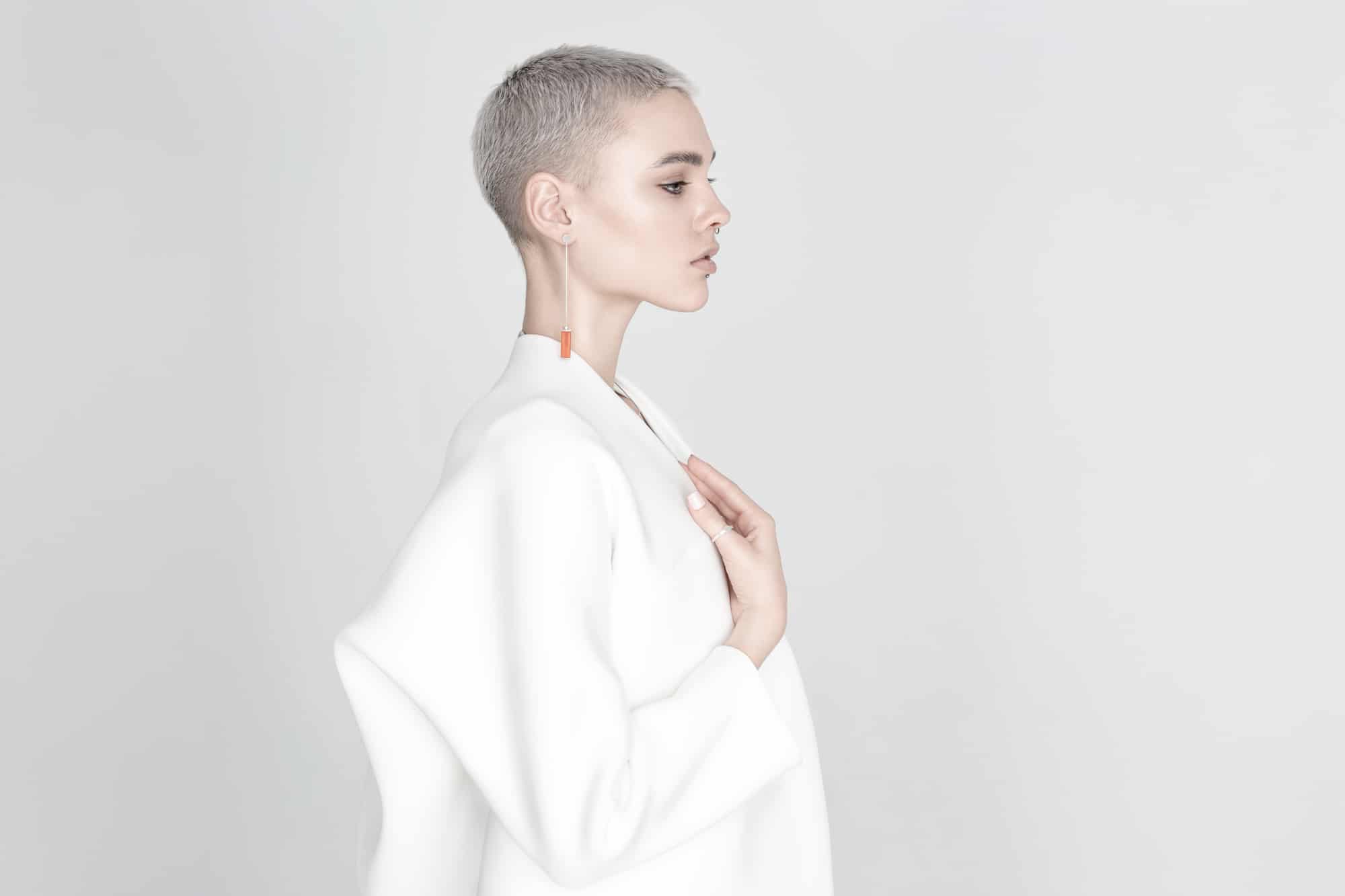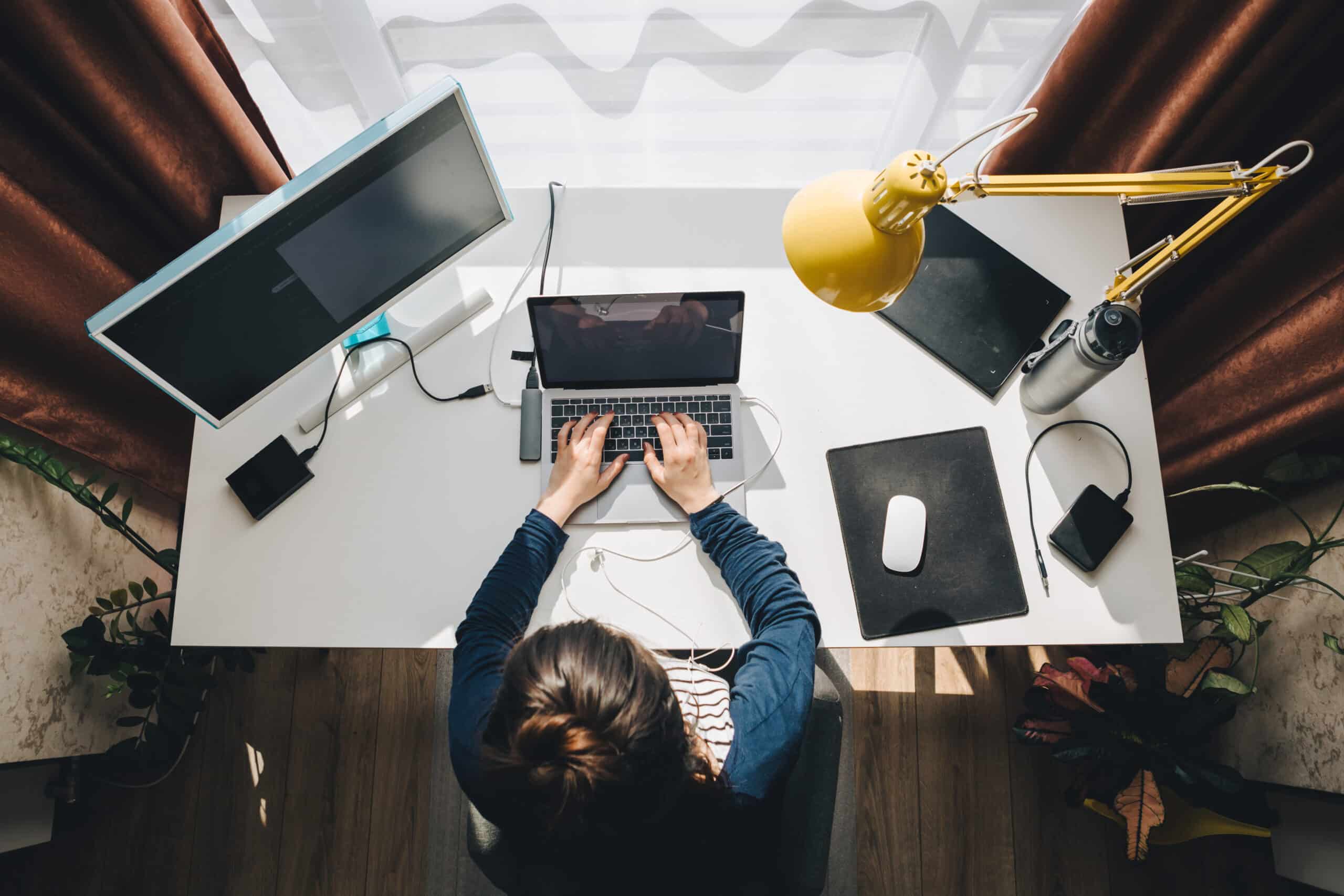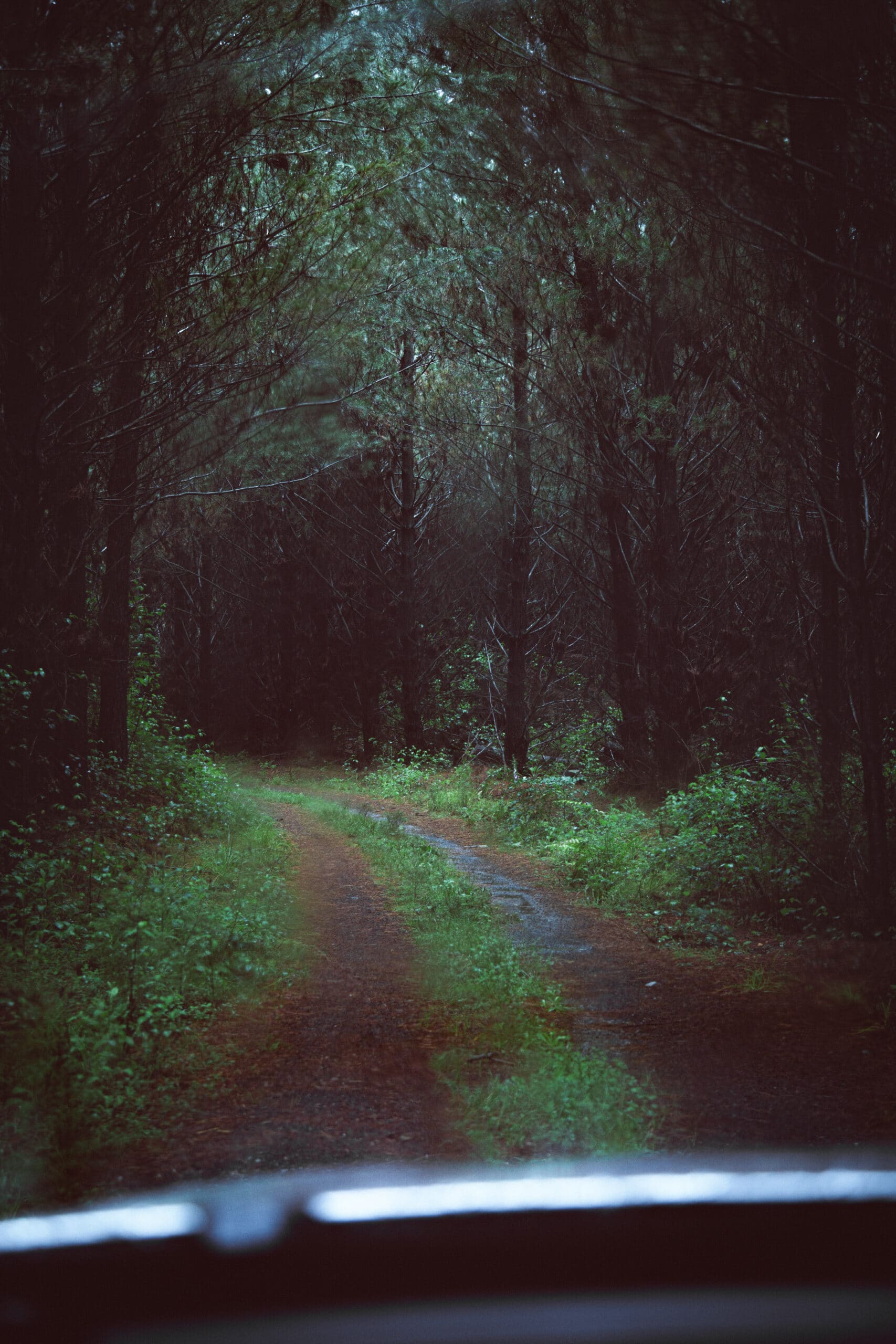Aundre Larrow found out about the Adobe Creative Residency by accident. He was shooting his first New York Fashion Week when he received an email from someone at Adobe who had discovered his photography. After asking around and looking into work created by previous Adobe residents, Larrow was sold. “I’m still not sure why she sent me that email,” Larrow said, “but I’m really happy she did. I didn’t know this existed.”
Larrow’s interest in photography began when he was a camera-obsessed kid. After college, he moved to New York for what he planned as a year of self-exploration. His photography career ended up taking off, and Brooklyn has now become his home. Until May, he’ll be part of the Adobe Creative Residency, working on realizing an ambitious portrait project.
Titled stories from here, Larrow’s residency project explores how our sense of place informs who we are as individuals. Larrow has traveled across the country photographing and interviewing people for the project, creating a diverse series of portraits that offer a window on identity in America. Larrow says stories from here was inspired by the results of the 2017 presidential election, and the reactions that it set off across the country. Larrow started to wonder whose stories get to be heard, whose lives are deemed legitimate, and how our geographical location may determine who we listen to, and who we overlook.
Since joining the Adobe Creative Residency, Larrow has signed with photography agency Tinker Street. They happen to also represent Chicago photographer Paul Octavious, who Larrow credits as a major inspiration. “Oh man, if you told me when I was twenty years old living in Chicago, in the summer in a room with no fan and no dresser and no AC, that after meeting Paul Octavious I would later be represented by the same agency as him… I would have laughed in your face.” Things are coming full circle in a way that Larrow never expected.
We asked Larrow to share his experience with the Adobe Creative Residency so far, how he has grown as an artist through the program, and what advice he has for emerging photographers looking to make their way in this wild art world.
Format Magazine: How do the logistics of the Adobe residency work? Are residents still working jobs and gigs?
Aundre Larrow: Adobe pays you like an employee. You have health benefits and a salary; you do expenses like a regular person. Once you start the residency, you don’t have another job. The residency is your job. They always say that they want you to grow three years in one, so they’re trying to push you. They’re not only giving you resources—my project is really travel-based, and they paid for the flights, the Ubers, the food, and places to stay. Then on top of that, I have two internal mentors and two external mentors.
Throughout this year I’ve been really lucky, and awesome and blessed and thankful, that I got to work with Samsung, American Express, and CNN. That happened because people found my work in the middle of the year and reached out. Adobe’s really supportive, so if you get an opportunity that’s big, they’re like, ‘Pause your project and go work on that.’ The goal is that when you finish the residency you should be at another level as a creative. So you don’t have any other job, but depending on what comes up, there are opportunities to work on other things if they help further your career.
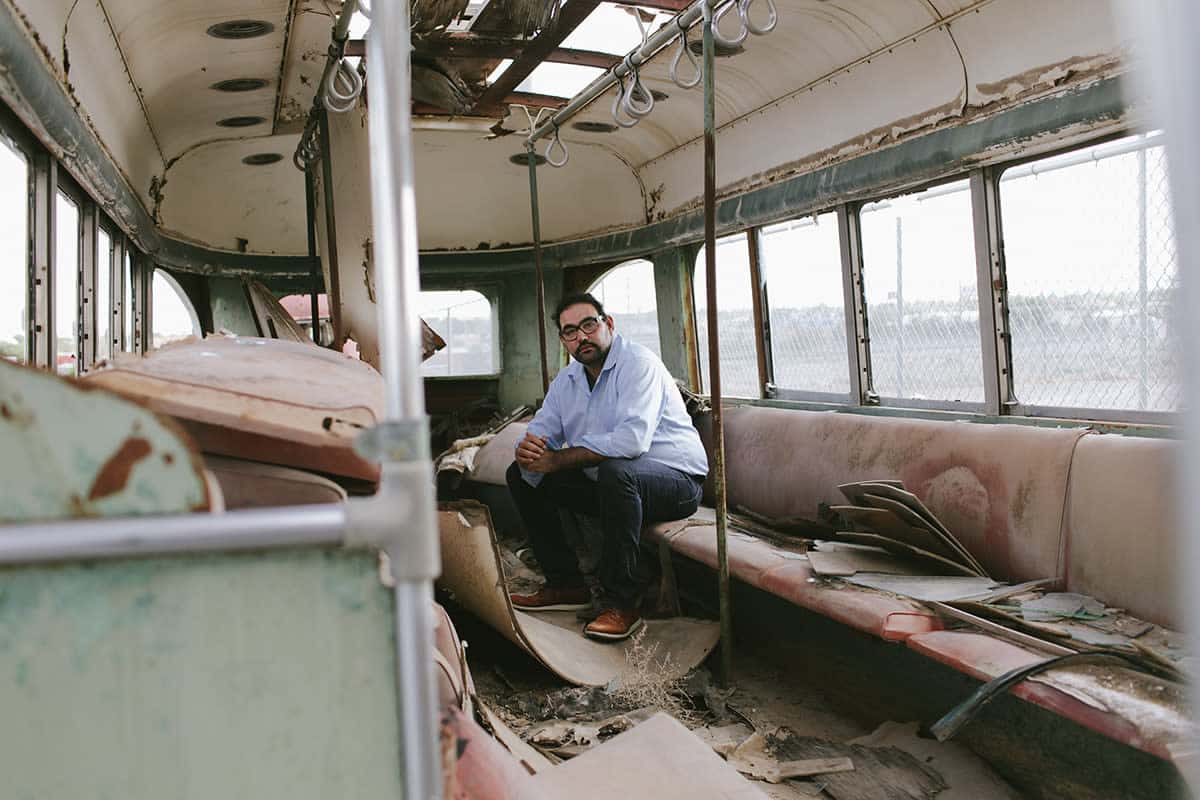
From stories from here: Peter S. in El Paso, Texas.
Tell us a bit about your mentors and how you work with each of them.
My internal mentors are Matthew Richmond [Director, Experience Design at Adobe XD] and Michelle Wei [Product Manager for Adobe Lightroom]. Matthew and I go over my general strategy, the design of my site, and how I’m marketing my work and myself. Michelle combs through every single word of everything that I write, asking, ‘Does this translate properly for what your goal is?’ Because the goal is to really to get you from ‘I just graduated from college and I’m a creative and this is all fun and i’m trying not to be broke’ to saying, ‘This is some serious stuff now and you need to understand everything that goes into it.’
The external mentors are people that Adobe pays to mentor you. I have Mac Premo, he’s a filmmaker that’s Brooklyn-based; and JM Harper, who is also a filmmaker. The reason I picked two filmmakers is that I don’t have any filmmaking experience and my last project for the residency is supposed to be a short film. On top of all that, you and the program director have a weekly check-in.
What is the main project you’re working on? Is it still quite close to what you originally pitched in your residency application?
My project used to be called Echo Chamber. I remember having a conversation with my roommate when there were the Ferguson riots. He asked me why people were destroying their own neighborhoods, and I was trying to explain to him why this was going on and he just wasn’t having it. Around election time I was feeling a little surprised by the results and which states went which way. I felt like I didn’t really understand the people around me. I kept thinking about voting in terms of place, like Ohio is a swing state. I thought that was really interesting, ideologically.
My original thought was that Echo Chamber is this project where the place where we are makes this echo chamber for us. It was a little too aggressive of a name. As the project started I changed the name to Stories from here.
In the application process, they ask you a lot of questions about what you’ve worked on, examples of past work, how you want to grow. Their whole thing for the year is growth and documentation of that growth.
What has been the most challenging thing about your Adobe residency so far?
As a creative, a lot of your peers are creatives. The expectation is that you got this residency, so you have to be making the most baller work anyone’s ever seen, immediately. I think in the beginning I really struggled to share my work because I was afraid of how it would come off to my peers, or my new peers, or internet people. I was really anxious that what I was doing wasn’t going to go well. The other thing that was challenging is that after I interview people, I always feel really weird leaving. Walking out of these interviews after someone has bared a part of their soul to me—that was really difficult. Each time I do an interview that makes me feel a little uncomfortable.
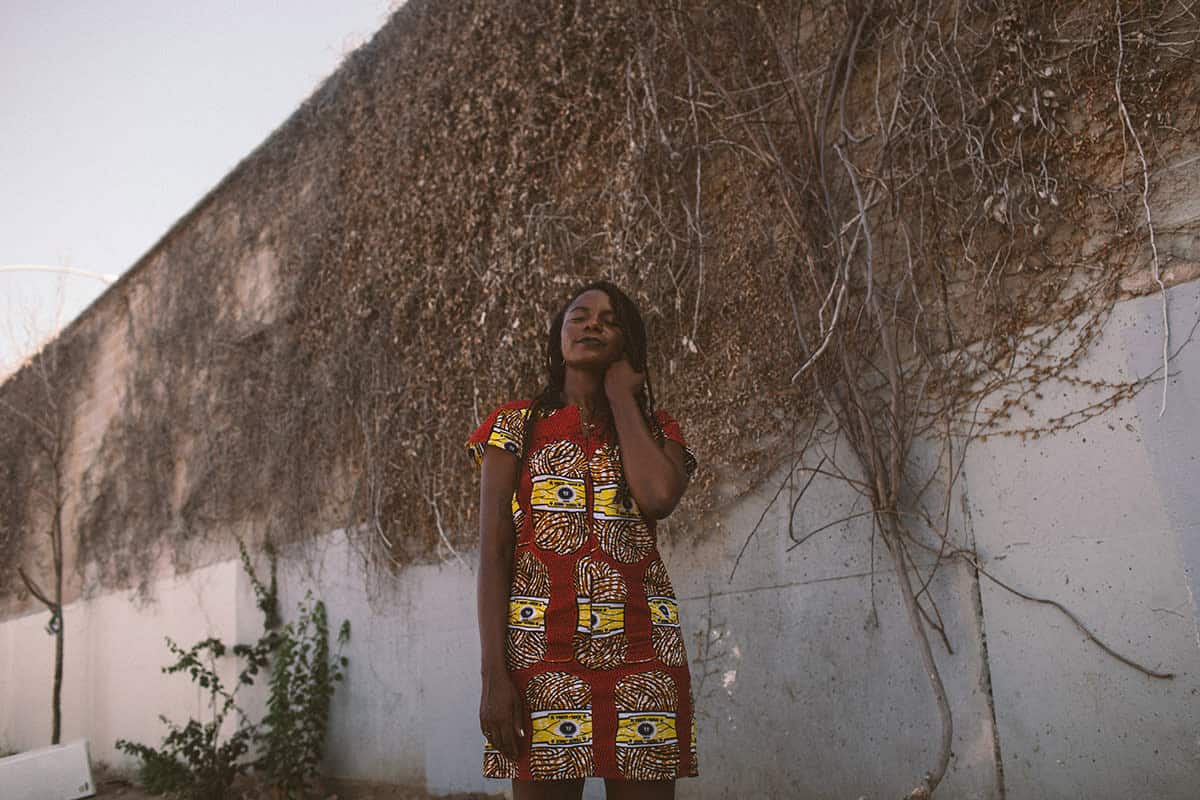
From stories from here: Essence H. in Los Angeles.
On the other side, what has been the most rewarding part of your residency so far?
First, the other residents are awesome. Generally we all don’t live in the same place, so it’s really nice that whenever we get to see each other we just talk about whatever we’re working on. Everyone’s working on such different stuff, but it’s exciting to see how things have changed from our first time together until now. Those relationships are great.
Also, I’ve really enjoyed being challenged. Often when you work on something that’s successful, the client will ask you to do that same thing repeatedly until it’s not popular anymore. There are times when you feel really frustrated with that because you get locked into the same style of shooting or illustrating or designing or whatever it is. But this gives you the ability to show the range of your skills, because the client is really yourself.
You’re more than halfway through your residency. What do you know now that you wish you had known before you started?
I operate from a place of fear too much. There’s a level of confidence that I try to carry myself with, and as the stakes get larger I will continue to perform, but there’s so much more anxiety. In the first half of the residency I was anxious! Some days I would go to sleep thinking, ‘Did I do enough stuff today?’ It was a thing that I’d had before, but not at this level. For a while I thought it was really important that I was working hard enough to justify these people deciding to let me be a resident. Or working hard enough to justify the people that chose to let me interview them. I think that mentality needed to surface. I needed to look myself in the face and ask myself what it is I’m so afraid of.
What advice do you have for creatives considering applying to the Adobe Creative Residency?
My advice for new creatives in general is to go easy on yourself. For creatives that are thinking about the residency: just do it. There’s no reason not to do it. The worst thing that can happen is you don’t get it, and at least you’ll have the practice of preparing a pitch and articulating it. That’s so valuable. I have friends that are super talented but they’re afraid of so many things so they never try anything. I always say, don’t be afraid.
All images are from stories from here. See more of Aundre Larrow’s photography at his website, built using Format.
